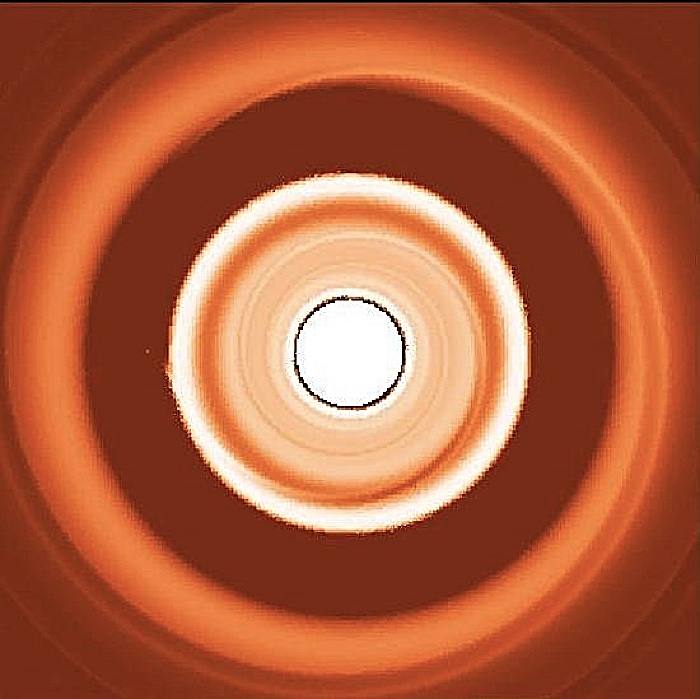Exoplanet Hunters Have a New Plan to Spot Hidden 'Migrating' Worlds

There's a telescope that can see thick rings of dust in distant star systems. These rings are huge — wide enough in some cases to encircle most or all the planets in our solar system. And they're the birthplaces of exoplanets. Understanding how they work could teach us about how the planets in our own solar system formed.
Now, a team of British researchers has figured out how infant planets should move within those rings, and how astronomers might observe those movements, even if they can't spot the planets themselves. Their conclusions were published online Oct. 17 on the preprint server arXiv.
"Planets are really, really hard to directly detect," said lead study author Farzana Meru, a planetary astronomer at the University of Warwick. "But planets open up a gap in the disk."
Like a little, tunneling mole leaving a track across the surface of a garden, exoplanets carve paths through protoplanetary disks that astronomers can spot, even if they can't see the planets directly. And even the ability to spot those tracks is new, Meru said, a level of detail made possible by the Atacama Large Millimeter/submillimeter Array (ALMA) telescope completed in March 2013 in Chile. [8 Cool Facts About the ALMA Telescope]
Those tracks aren't long-lived enough, however, to tell the very long story of how a planet has migrated within its system. Researchers have long known that planets can change their orbits significantly, but they've never observed the behavior in action.
Meru and her team's technique could change that. That's because even if ALMA can't see the planet itself, it can see the size of the dust in the ring surrounding it.
"Small wavelengths [of electromagnetic radiation] correspond to small dust sizes, and larger wavelengths correspond to larger dust sizes," she said.
Get the Space.com Newsletter
Breaking space news, the latest updates on rocket launches, skywatching events and more!
So, researchers looking at ALMA data can see if the dust in one ring is thicker or finer than the dust in another.
Meru's team simulated how those dust particles would sort themselves as the planet migrated. As a planet migrates inward, toward its star, they found, it should cause the nearby dust particles to speed up, flinging them into a wider orbit. But bigger dust particles get flung around more easily, while smaller particles tend to get slowed by drag against ambient gas in the ring.
Over long periods of time, Meru said, that should create two distinct rings of dust around an inward-migrating planet: one outside its orbit, made up of thicker particles flung out there by its movement; and one inside the planet's orbit, made up of those finer particles that were too slowed by ambient gasses to follow along.
ALMA should be able to see that effect in the wavelengths of radiation reaching its fine-tuned sensors from those distant clouds of debris, the team found — offering the best opportunity yet to catch a migrating planet in action, Meru said.
Originally published on Live Science.
Join our Space Forums to keep talking space on the latest missions, night sky and more! And if you have a news tip, correction or comment, let us know at: community@space.com.

Rafi wrote for Live Science from 2017 until 2021, when he became a technical writer for IBM Quantum. He has a bachelor's degree in journalism from Northwestern University’s Medill School of journalism. You can find his past science reporting at Inverse, Business Insider and Popular Science, and his past photojournalism on the Flash90 wire service and in the pages of The Courier Post of southern New Jersey.










